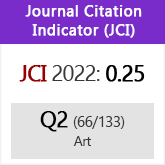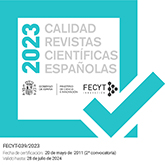Van Dyck’s prestige and critical fortune in Spanish treaties
DOI:
https://doi.org/10.3989/aearte.2011.v84.i333.455Keywords:
Cardenal Infante, Carducho, de los Santos, Palomino, Pedro de Moya, Díaz del Valle, Interián de Ayala, Alonso de Talavera, Rejón de Silva, Preciado de la Vega, Mengs, Mayans y Siscar, Ponz, Ceán Bermúdez, Fromentín, Tormo.Abstract
Unlike Rubens, van Dyck has been a marginal figure in Spanish art criticism even to the point of not holding commemorative exhibitions to celebrate his 400th anniversary in 1999. Nevertheless, during the 17th century in Spain his paintings were as admired by art writers as by art patrons, and his influence was actually greater than that of Rubens. This article proposes to demonstrate realities and omissions. The echo of Van Dyck’s art was just as widespread and important in Spain as in Flanders, Italy or England. A single collector, the marquis of Carpio, owned more paintings by the artist than Charles I of England. For Lázaro Díaz del Valle he was the “true phoenix of our century,” and Velázquez used van Dyck’s engravings as models for his elegant portrait of the Count-Duke of Olivares.
Downloads
Download data is not yet available.
Downloads
Published
2011-03-31
How to Cite
Díaz Padrón, M. (2011). Van Dyck’s prestige and critical fortune in Spanish treaties. Archivo Español De Arte, 84(333), 41–58. https://doi.org/10.3989/aearte.2011.v84.i333.455
Issue
Section
Articles
License
Copyright (c) 2011 Consejo Superior de Investigaciones Científicas (CSIC)

This work is licensed under a Creative Commons Attribution 4.0 International License.
© CSIC. Manuscripts published in both the printed and online versions of this Journal are the property of Consejo Superior de Investigaciones Científicas, and quoting this source is a requirement for any partial or full reproduction.All contents of this electronic edition, except where otherwise noted, are distributed under a “Creative Commons Attribution 4.0 International” (CC BY 4.0) License. You may read here the basic information and the legal text of the license. The indication of the CC BY 4.0 License must be expressly stated in this way when necessary.
Self-archiving in repositories, personal webpages or similar, of any version other than the published by the Editor, is not allowed.















